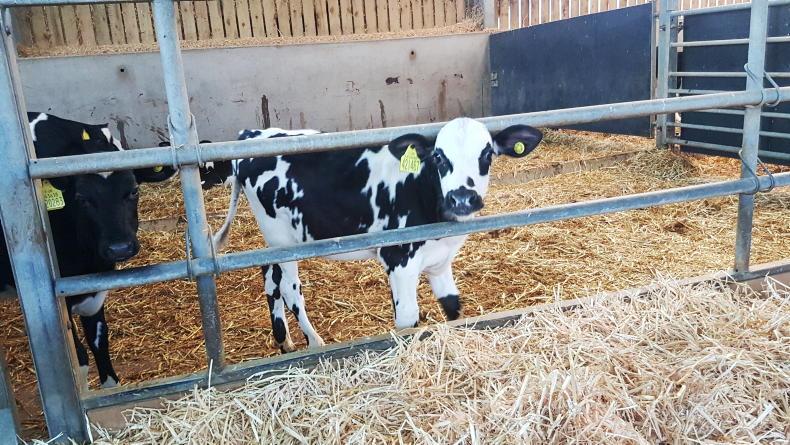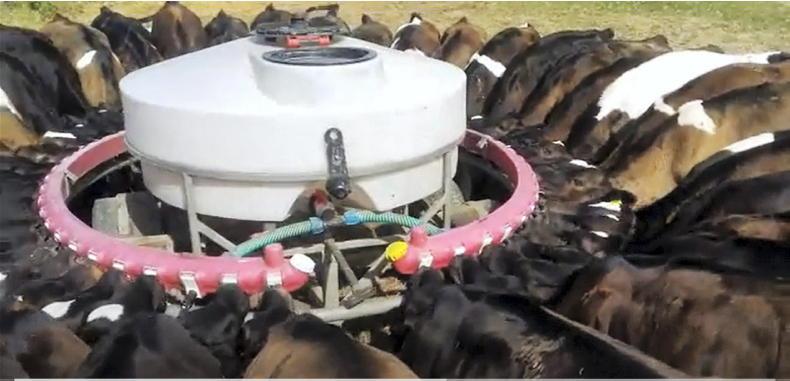All systems have pros and cons, and considering all the consequences of the chosen milk feeding system is critical in planning when and how to wean, a recent CalfChat event hosted by Bonanza Calf Nutrition was told.
Only 50% of CalfChat participants said they planned for weaning at the beginning of the rearing period, while 33% plan in the middle of the pre-weaning period and 17% at the point of weaning.
Dr Christine Cummins of Bonanza Calf Nutrition said keeping calves healthy was a priority and when making a plan, rearers have to assume animals will grow healthily - and if they don’t, then the plan needs to be adjusted.
The calf’s gut development is key to its efficiency, health and longevity as an adult.
Calves are born with a microbial community, known as the microbiome, which is greatly influenced by what the calf ingests.

In early life, the microbes respond to the milk sugars found in colostrum and transition milk and these microbes have an important role in protecting the gut from pathogens.
They also help the calf by digesting the lactose in the milk it has taken in, says Dr Cummins.
“The microbes in the rumen are in balance even at two weeks of age and respond at first to increased fibre consumption, but more slowly to starch intake,’’ she explains.
The microbes in the calf’s gut change over time to respond to fibre and starch consumption in the dry feed; these are mostly responsible for how starch is digested in the small and large intestines.
It takes time for the microbial population to change from those that digest most of the lactose - the lactobacilli - to bacteria that can utilise starch. It is estimated that one third of the starch fed to calves is potentially digested in the small and large intestines.
This is the reason why calves fed high levels of milk require much longer rearing periods, says Dr Cummins.
“If calves are offered 900g or more of milk solids, the weaning process will take four weeks or more. Therefore, calves should be fed milk until 12 weeks or more,’’ she advises.
When calf growth is pushed with milk solids, weight is increased, but so too is reliance on lactobacilli.
The length of time a calf needs to be weaned varies greatly according to the system.
The majority of CalfChat participants - 44% - believed a calf should be weaned over the course of one week, while 33% thought that time period should be two weeks.
But, as Dr Cummins explains, it is not as simple as that - it is all dependent on feed volume and frequency and concentrate consumption.
A calf that is consuming high levels of milk, in multiple feeds daily and is weaned over one to two weeks, may be seen to eat a lot of dry feed by the end of weaning, but its rumen can’t utilise all of it.
Furthermore, the small intestine also struggles and this leads to inflammation in the gut.
Growth checks and health issues may be seen and any benefit from extra milk feeding is lost.
This is both expensive and wasteful, Dr Cummins points out.
“Also, what must not be ignored is that in systems in which a calf is suckling the dam, the cow will produce only 10-12 litres of milk after four to six weeks and that calf is weaned at six months or more.
“Artificial rearing systems are trying to mirror that in eight weeks.’’
Whether weaning at eight weeks or 12 weeks it is important that the rearer understands which system encourages dry feed intake and the development of rumen and gut microbial population.
For example, 50% of CalfChat participants feed calves high quantities of milk - 900g/day or more; in this situation they should plan to wean at 12 weeks or older and monitor concentrate intakes closely throughout the preweaning period, Dr Cummins recommends.

With once-a-day feeding, the appropriate feed intake encourages the consumption of concentrates, but this isn’t a consequence of them being hungry - calves should have sufficient milk feed to satisfy them and provide energy all day long.
But, because they are not waiting for a second feed, they will consume more concentrates at an earlier age, says Dr Cummins.
“This will help develop the correct microbiome for forage and concentrate utilisation,’’ says Dr Cummins.
It can also positively influence longevity and protect calves from becoming overfat
If the same amount of milk was fed through once-a-day or twice-a-day feeding or through automatic feeders, two feeds a day would take longer to prepare the rumen for weaning, Dr Cummins added.
By holding the feeding rate constant, the calf can be encouraged to eat more concentrates from an earlier age.
And by moving to once-a-day feeding and then reducing the feed volume before finally weaning, growth checks at weaning can be eliminated and the calf’s health protected, maximising its potential, whether it’s a beef or dairy animal.
Dr Cummins says there are no magic ingredients, secret formulas or feeding regimes with calf nutrition and, while it might seem logical that more is better, digestive systems are complex.
“By weaning earlier than a cow in nature would, it is very important that milk, concentrates, water and forage are used in tandem,’’ she says.
Calf rearing hints - Bonanza Calf Nutrition.






 This is a subscriber-only article
This is a subscriber-only article








